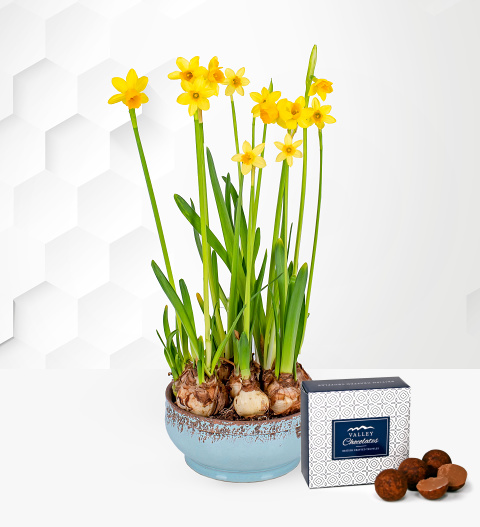
Daffodil plant care and advice
Daffodils are known for producing some of the most amazing and vibrant blooms. While they are associated with the spring season, they are to be planted in the autumn so that the bulbs can endure a dormant phase over the winter and grow again as soon as temperatures rise. If you want to learn how to best grow and care for your daffodil plant, here are some essential tips.
Growing advice
If you notice that your bulbs are not growing as well or as quickly as they should, you can apply a high-potash, low-nitrogen fertilizer to the soil. Remember to always follow the instructions on the package for best results. If your area has not experienced much rain, you may notice that your daffodil plant will not produce as many blooms. Make sure that you water them regularly but not too frequently for beautiful blooms. When the flowers start to fade, it’s time to deadhead and remove dying flowers. You should also allow the plant to die off on its own. Do not trim it! When they appear to be dying, they are actually going into a dormant phase and storing food for the winter so that they have enough energy to sprout again the following spring. Once dormant, add bonemeal to the soil to prepare them for the following year.
Diseases and pests
Just like any plant or flower, your daffodil plant is not immune to pests or disease. Some of the most common problems include the bulb scale mite, narcissus nematode, slugs and the narcissus bulb fly. Other fungal infections and viruses can also affect these plants. If you notice that one of your plants is affected by such an infection, remove it immediately to reduce the risk of it spreading.
Important information
If you have pets, a daffodil plant might not be the best choice for you. These plants are toxic to animals. Should you simply have to plant them in your garden, make sure that the area is secluded and your pets do not have access. When tending to your daffodils, remember to always wear gloves. The stems secrete a liquid that can cause severe skin irritations. In addition, you should always display these cut flowers on their own. This same liquid causes other flowers in the vase to perish. If you really want to combine them with other blooms, soak them (by themselves) in clean water for as long as possible before adding them to the display.
Your daffodil plant can make a real statement in your home and garden. Whether you want to keep it in a planter by your window or in the ideal spot in your garden, you will certainly enjoy their bright blooms year after year.
